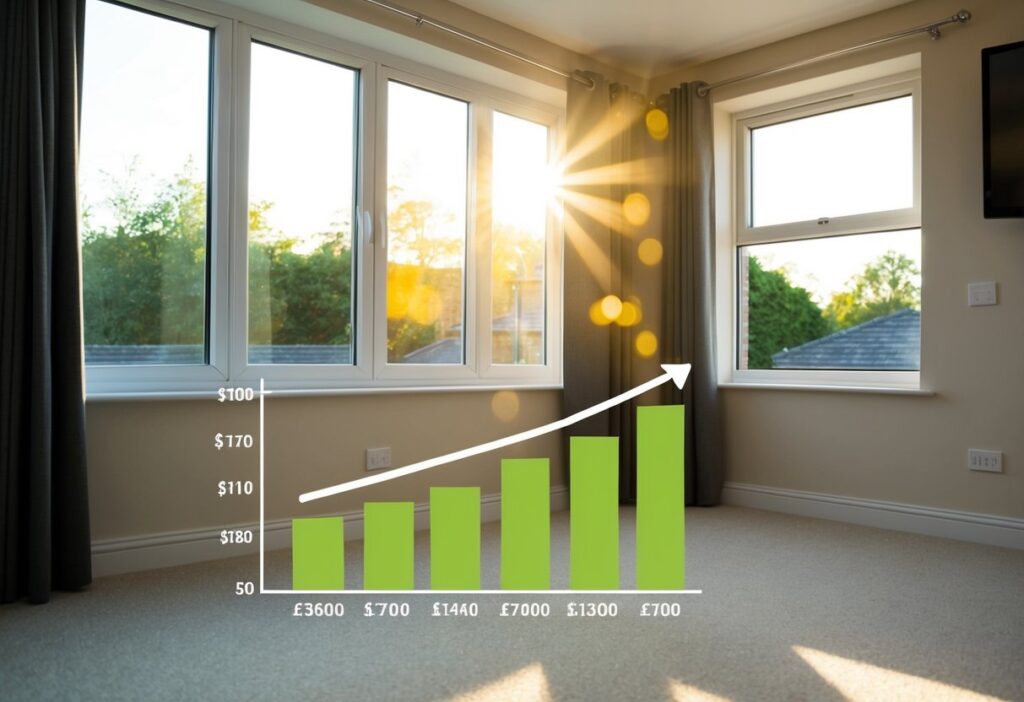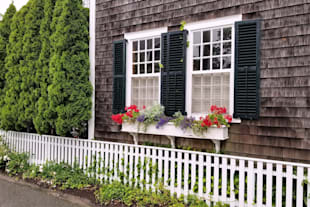Double glazing is one of the most effective ways to reduce energy costs in your home. Instead of having a single pane of glass in your windows, double glazing uses two panes with a gap between them. Heat is lost through single glazing around twice as fast as through standard double glazing, which means upgrading could save you up to £140 per year on heating costs.

This home improvement works by creating an insulating barrier that keeps warmth inside during winter months and helps maintain cooler temperatures in summer. The trapped air or gas between the panes acts as insulation, reducing the transfer of heat. By providing better insulation, double-glazed windows reduce the need for heating and air conditioning throughout the year.
The benefits extend beyond just lower energy bills. Double glazing also helps create a more comfortable living environment by eliminating cold spots near windows and reducing condensation problems. With energy prices continuing to rise, investing in energy-efficient windows and doors has become an increasingly popular choice for homeowners looking to improve their property’s efficiency and comfort.
Understanding Double Glazing
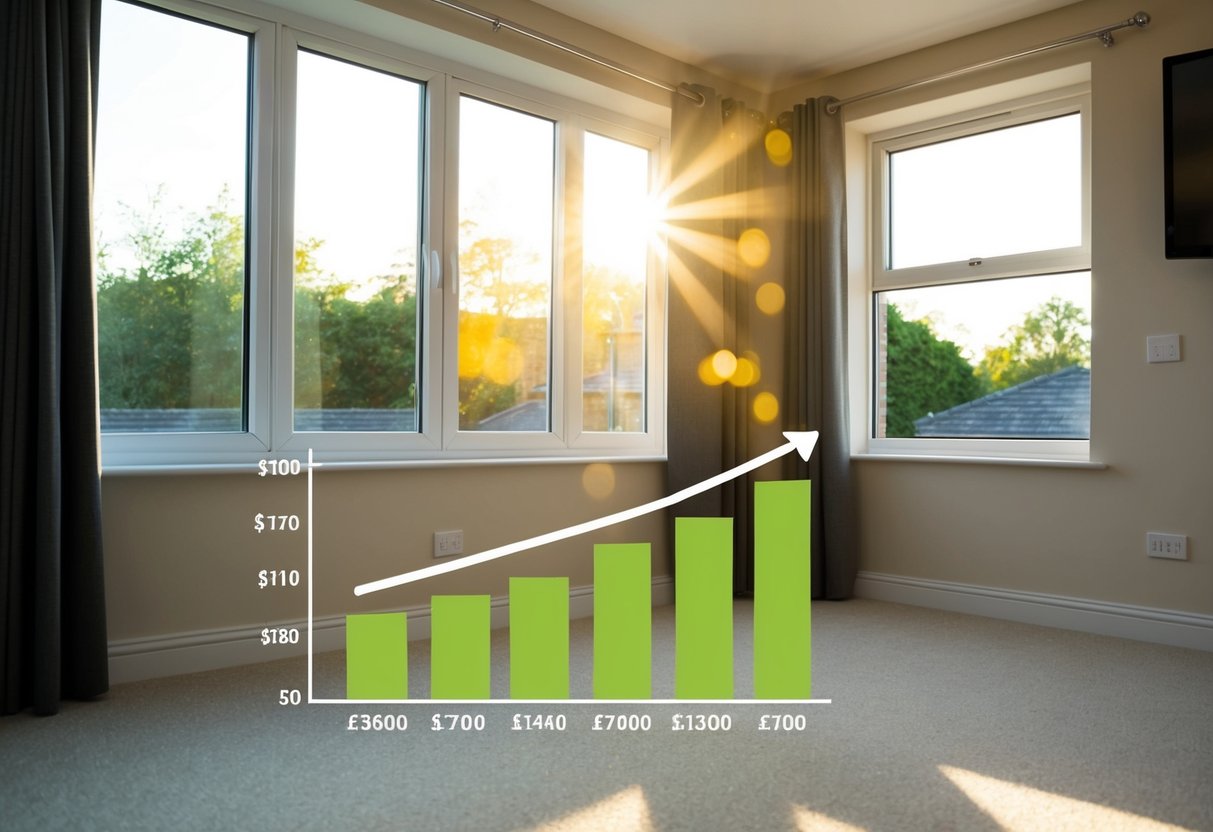
Double glazing technology offers a simple yet effective solution for improving home energy efficiency. This innovative window design creates an insulating barrier that significantly reduces heat transfer, keeping homes warmer in winter and cooler in summer.
Components of Double-Glazed Windows
Double-glazed windows consist of several key parts working together as an insulation system. The most visible elements are two panes of glass separated by a gap of 12-20mm. This gap is sealed and either filled with air or gases like argon or krypton that have better insulating properties than air.
Spacer bars run around the perimeter between the glass panes, maintaining the precise separation distance. These are typically made from aluminium, warm-edge composite materials, or thermoplastics. Modern spacer bars often include desiccant materials to absorb any moisture that might enter the sealed unit.
The entire assembly is fixed within a frame made from uPVC, timber, aluminium, or composite materials. Each frame material offers different benefits regarding thermal performance, maintenance requirements, and aesthetics.
How Double Glazing Works
Double glazing reduces heat loss through a simple but effective physical principle. The sealed gap between glass panes creates a thermal barrier that slows heat transfer. During winter, this barrier prevents warm indoor air from escaping to the colder outside environment.
The gas filling enhances insulation properties further. Gases like argon conduct heat poorly compared to air, reducing thermal bridging. When sunlight enters through the windows, the heat becomes trapped inside, creating a greenhouse effect that helps warm your home.
In summer, double glazing works in reverse. It blocks excessive heat from entering your home, reducing the need for cooling. Some advanced units include low-emissivity (low-E) coatings that reflect heat back to its source whilst still allowing light to pass through.
Different Types of Double Glazing
Standard double glazing features two panes of clear glass with an air or gas-filled cavity. This basic configuration offers significant improvement over single glazing, with U-values typically between 1.6-2.8 W/m²K (lower values indicate better insulation).
Low-E double glazing incorporates a microscopic metal oxide coating on one glass surface. This invisible layer reflects heat while allowing light to pass through, enhancing thermal performance by up to 40% compared to standard units.
Acoustic double glazing uses glass panes of different thicknesses and wider gaps to reduce sound transmission. This type is ideal for homes near busy roads or in urban areas.
Security double glazing incorporates laminated or toughened glass for added protection. Some premium options combine multiple benefits with triple glazing (three panes) for maximum thermal performance, achieving U-values as low as 0.8 W/m²K.
Benefits of Double Glazing for Energy Efficiency
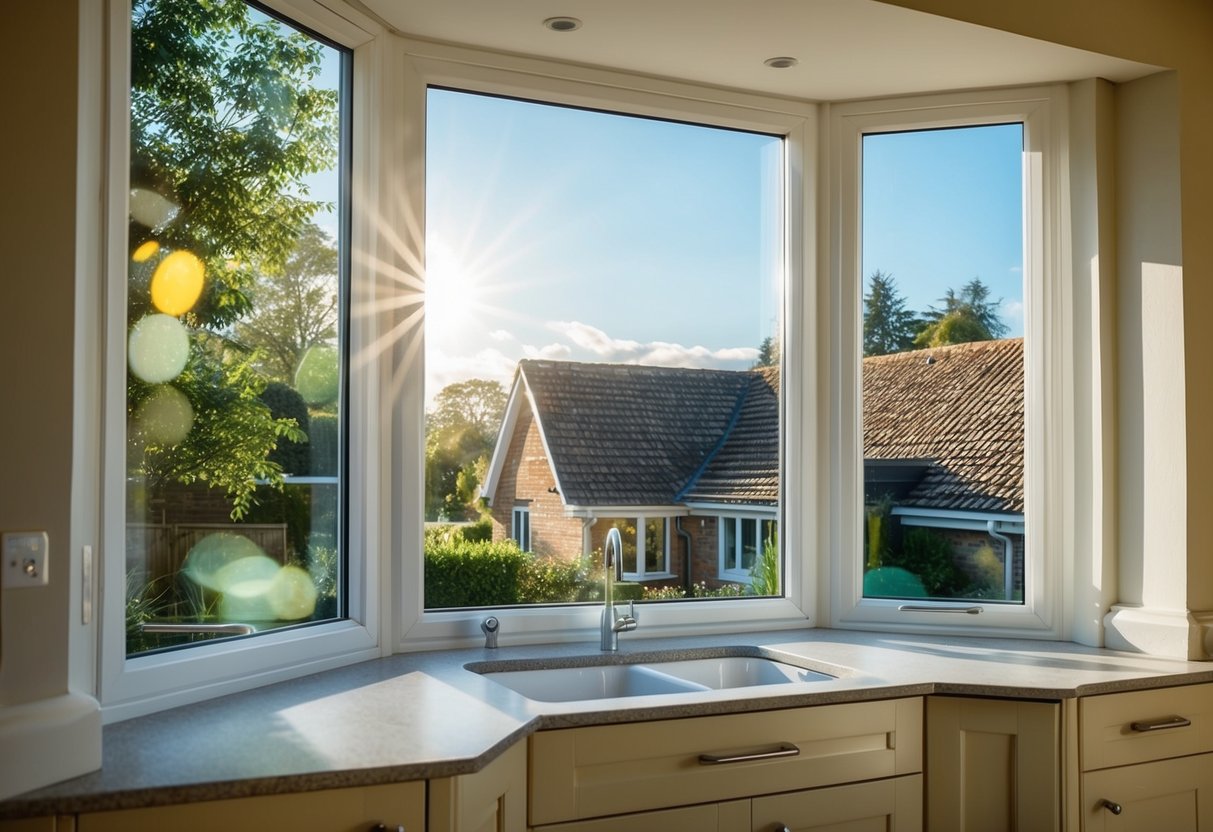
Double glazing offers significant advantages for homeowners looking to improve their property’s energy performance. These specialised windows provide multiple benefits that directly impact both comfort and utility costs.
Reducing Heat Loss and Improving Insulation
Double glazed windows significantly reduce heat loss by up to 50% compared to single glazing. This remarkable improvement comes from the insulating air or gas layer trapped between two panes of glass, which creates a thermal barrier.
The physics behind this is straightforward: the sealed gap prevents warm air from easily transferring to the cold outside environment during winter months. According to the Energy Saving Trust, this improved insulation can save households up to £140 per year on energy bills.
Modern double glazing often comes with energy ratings, with A+ being the highest current standard. These ratings help consumers identify the most efficient options when replacing windows.
The insulation properties also work in summer, keeping hot air outside and cool air inside, reducing the need for additional cooling systems.
Enhancing Comfort and Central Heating Performance
Double glazing eliminates cold spots and draughts near windows, creating a more consistently comfortable home environment. This means no more avoiding sitting near windows during chilly weather.
With better insulation, central heating systems don’t need to work as hard to maintain comfortable temperatures. This reduced strain leads to more efficient operation and potentially extends the lifespan of heating equipment.
The insulation also creates a quieter indoor environment by reducing external noise pollution. This acoustic benefit is particularly valuable for homes in busy urban areas or near traffic.
Temperature fluctuations become less dramatic throughout the day, maintaining more stable indoor conditions regardless of external weather changes.
Lowering Carbon Footprint Through Sustainable Living
Installing energy-efficient double glazed windows directly reduces a home’s carbon footprint by decreasing the amount of energy needed for heating and cooling.
Less energy consumption means fewer carbon emissions associated with fossil fuel burning. For an average home, this can represent a significant reduction in annual CO2 output.
Double glazing contributes to sustainable living by conserving resources and reducing unnecessary energy waste. This makes it an important component in environmentally responsible home improvements.
Many quality double glazing products are designed with sustainability in mind, using recyclable materials and manufacturing processes that minimise environmental impact.
The long lifespan of modern double glazed units—typically 20+ years with proper maintenance—means fewer replacements and less associated waste compared to older window technologies.
Comparing Double Glazing with Other Window Solutions
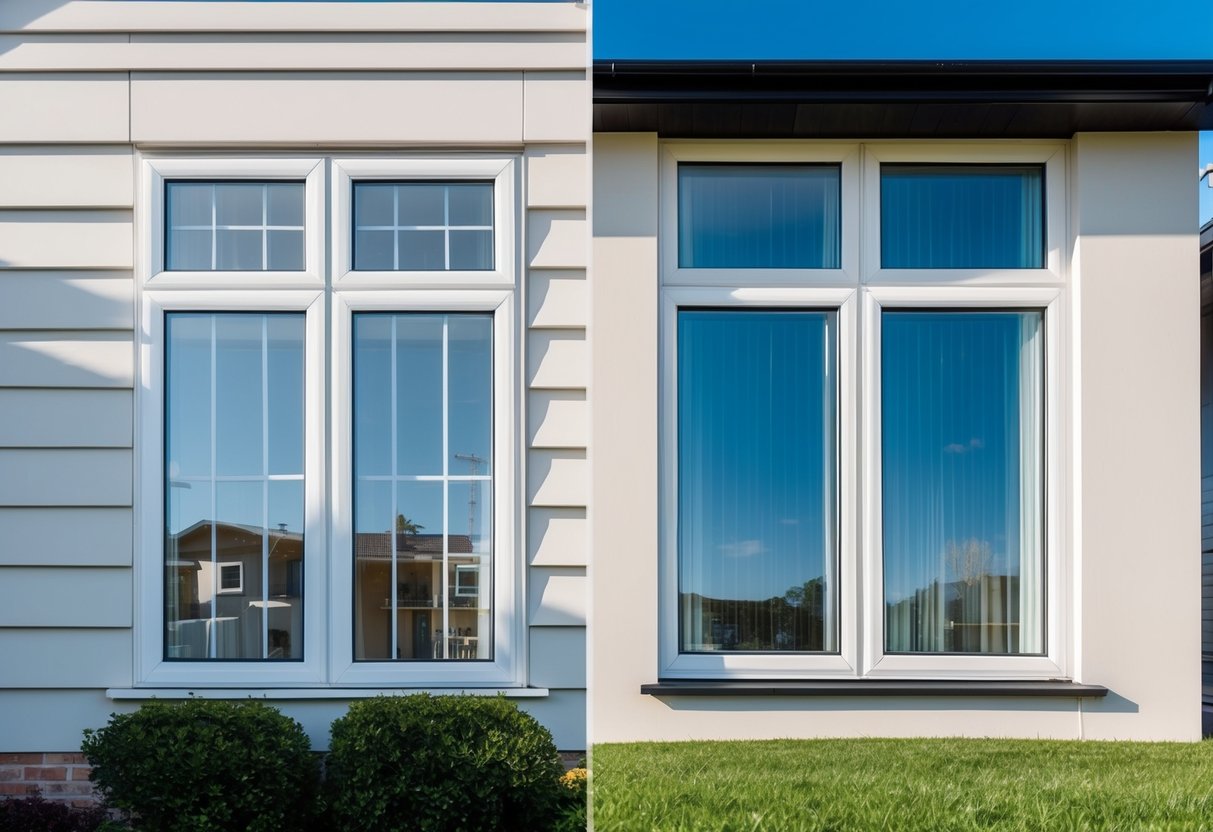
Window technology has evolved significantly over the years, with various options now available for homeowners looking to improve energy efficiency. Double glazing offers substantial benefits compared to traditional alternatives, though other solutions may be suitable depending on specific circumstances.
Single Glazed Windows Versus Double Glazed Windows
Single glazed windows consist of just one pane of glass, providing minimal insulation against heat transfer. These traditional windows allow heat to escape easily during winter and permit unwanted heat to enter during summer.
Double glazed windows, by contrast, contain two glass panes separated by an air or gas-filled gap that acts as an insulation barrier. This design significantly reduces heat transfer, keeping homes warmer in winter and cooler in summer.
Studies show that replacing single glazing with double glazing can reduce energy bills by approximately 10-12%. This translates to meaningful savings over time, with many homeowners seeing a return on their investment within several years through reduced heating and cooling costs.
The temperature difference between a room with single glazing versus double glazing can be quite noticeable, especially during extreme weather conditions.
Advantages of Upgrading to A-Rated Energy-Efficient Windows
A-rated energy-efficient windows represent the pinnacle of window technology, offering superior performance compared to standard double glazing. These windows feature:
- Low-emissivity (Low-E) glass that reflects heat back into the room
- Optimised gap between panes filled with argon or krypton gas
- Improved frame materials like uPVC that provide better insulation
- Enhanced seals to prevent draughts
uPVC frames are particularly beneficial as they don’t conduct heat like aluminium frames and don’t require the maintenance of wooden frames. They’re also highly durable and recyclable.
A-rated windows can reduce energy consumption beyond what standard double glazing offers. While they typically cost more initially, the additional energy savings often justify the higher price for homeowners planning to stay in their property long-term.
Considering Secondary Glazing as an Alternative
Secondary glazing provides a different approach by adding an additional window to the inside of existing single glazed windows. This creates an insulating layer similar to double glazing but without replacing the original windows.
This solution is particularly valuable for:
- Listed buildings where replacing original windows isn’t permitted
- Properties in conservation areas with restrictions
- Homeowners working with limited budgets
Secondary glazing typically costs 30-50% less than full double glazing installation. While not quite as effective as purpose-built double glazed units, it still significantly improves energy efficiency compared to single glazing alone.
Another benefit is noise reduction, as the additional air gap helps dampen sound transmission. Installation is also less disruptive as it doesn’t require removing existing windows or making structural changes.
Practical Considerations for Double Glazing Installation
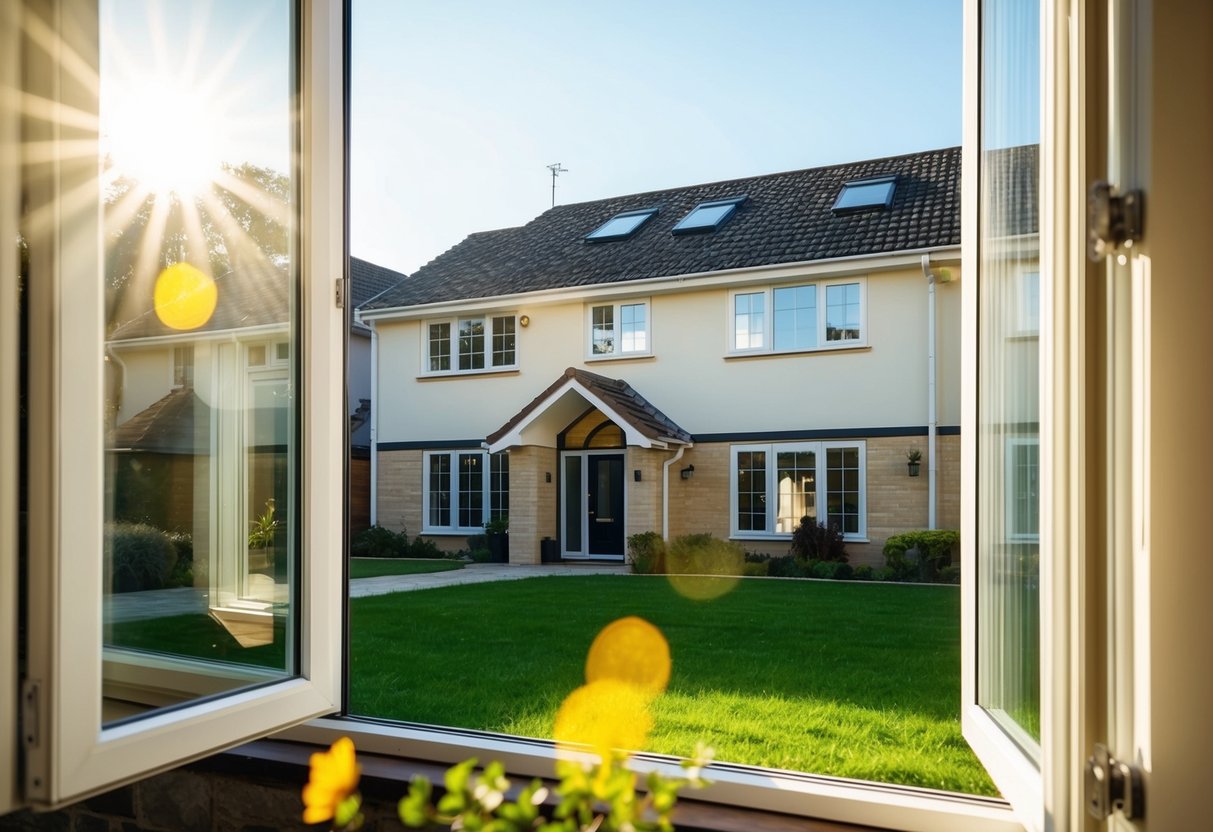
Installing double glazing requires careful planning and decision-making to ensure you get the best results for your home’s energy efficiency. Making informed choices about materials, installation and maintenance can dramatically impact both performance and cost savings.
Selecting the Right Type for Your Home
The market offers various double glazing options to suit different property styles and requirements. For period properties, modern sash windows with double glazing provide heritage appeal while improving energy efficiency. These combine traditional aesthetics with contemporary performance.
For more conventional homes, uPVC frames offer excellent insulation at a reasonable price point. Aluminium frames provide slim sightlines and durability, though they may cost more initially.
Consider the glass specification carefully. Low-emissivity (Low-E) glass reflects heat back into rooms, whilst gas-filled units (typically argon) between panes enhance thermal performance.
Key factors to consider when selecting:
- Property style and age
- Budget constraints
- Local weather conditions
- Noise reduction requirements
- Security needs
Understanding the Role of Professional Installation
Professional installation is crucial for energy-efficient windows to perform properly. Even the highest quality double glazing will underperform if poorly fitted.
Qualified installers ensure windows are correctly sealed, preventing draughts and heat loss around frames. They also address potential thermal bridging issues that could compromise efficiency.
Look for installers registered with industry certification schemes such as FENSA in the UK. These professionals follow building regulations and provide warranties for their work.
The installation process typically involves:
- Removing existing windows
- Preparing and squaring openings
- Fitting new frames and glass units
- Sealing all joints properly
- Testing operation and efficiency
Customer satisfaction often correlates directly with installation quality, so prioritise experience and credentials over the lowest price.
Maintenance and Longevity of Double-Glazed Windows
Well-maintained double glazing can last 20+ years. Regular cleaning of frames and glass prevents dirt build-up and allows you to check seals remain intact.
For uPVC frames, warm soapy water is sufficient for cleaning. Avoid abrasive cleaners that might scratch surfaces. For timber frames, regular repainting or staining protects against weathering.
Check rubber seals annually for signs of degradation. These can shrink over time, creating gaps where draughts enter. Most manufacturers offer replacement seals if needed.
Maintenance checklist:
- Clean frames quarterly
- Clear drainage channels of debris
- Lubricate hinges and locks annually
- Check for condensation between panes (indicates seal failure)
- Tighten any loose handles or fittings
Prompt attention to minor issues prevents them becoming major problems. This proactive approach maximises the energy efficiency benefits and extends the lifespan of your home improvements.
Additional Benefits Beyond Energy Savings
Double glazing offers several advantages that extend beyond just reducing your energy bills. These benefits can significantly improve your home’s comfort and address common household issues.
Noise Reduction and Improved Quality of Life
Double glazed windows create a substantial barrier against external noise pollution. The gap between the two panes acts as an acoustic buffer, reducing sound waves that enter your home. This can decrease outside noise by up to 50% compared to single glazing.
For homes near busy roads, airports, or urban areas, this noise reduction benefit can dramatically improve sleep quality and reduce stress levels. The sound insulation properties of double glazing can transform a noisy living space into a peaceful sanctuary.
Many homeowners report being able to concentrate better when working from home after installing double glazing. The reduction in noise disturbances is particularly valuable for families with young children or shift workers who need to sleep during daytime hours.
Prevention of Condensation and Draughts
Double glazing effectively eliminates annoying draughts that cause discomfort and waste energy. The tight seals around modern double glazed units prevent cold air from seeping in through gaps.
Condensation occurs when warm, moist air meets a cold surface. Single glazed windows often develop condensation, which can lead to mould growth and damage to window frames. Double glazing keeps the interior pane warmer, significantly reducing condensation problems.
The improved insulation prevents the cold spots that typically form around windows in winter. This creates a more consistent temperature throughout rooms and eliminates the need to avoid sitting near windows during colder months.
Winter mornings become more comfortable with less of the chilly sensation near windows. This improved thermal comfort complements the energy savings by creating a more pleasant living environment year-round.
